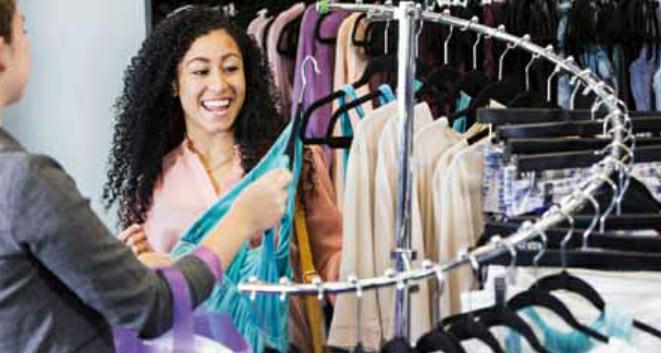Head into summer:Prepping for growth after slow ’15 start
by+Lareina
The lazy, hazy, crazy days of summer are just about here... so now will shoppers come out of hiding and buy something? Housing sales have increased, the unemployment rate fell to a seven-year-low of 5.4% and the Dow Industrial Average recently reached an all-time high. With these feel-good markers in place, apparel retailers and brands need to look past any unexpected deviations that slowed recent sales to focus on their long game. That means employing meaningful programs to engage shoppers online and in-store.
Last week, the U.S. Commerce Department said the economys gross domestic product declined -0.7% on an annualized basis in the first quarter of 2015. This news comes after the Census Bureau announced retail sales were flat in April, following a 1.1% rise in March. The agency reported the biggest drop occurred at department stores, which saw a-2.2% decrease. Experts ascribe the sales decline to, among other things, harsh winter weather and a port shutdown.
This is the second year in a row the GDP has contracted after a paralyzing winter and based on last year, experts are adopting a positive outlook for the second quarter.
"I would expect that the pace of economic activity and retail spending with it will advance more robustly as the summer months roll on," says Michael Niemira, principal and chief economist at The Retail Economist, LLC.
More than 4 in 10 consumers (43%) say they are "very or somewhat optimistic" about the U.S. economy, according to the Cotton Incorporated Lifestyle Monitor? Survey. That stat reflects a steady and significant increase over the last five years -- from 35% in 2011 to 38% in 2014. Optimism is even higher among men (49%).
When it comes to their own personal financial situation, more than half of all consumers (51%) say they are "very or somewhat optimistic," which is similar to responses in 2013 (50%) and 2014 (51%), but well up from levels in 2011 and 2012(48%), the Monitor? data shows.
And apparel retailers should find it heartening that 53% of shoppers say they"love or enjoy" clothes shopping, up from 49% in 2011, according to Monitor? research.
Overview of US economy, consumer spending on apparel increased for the second consecutive month in April (+0.4%). In the latest available data for April, the year-over-year change in apparel spending was 2.5% higher than a year ago. The average year-over-year change in apparel spending in 2015 has been 3.9%. The average year-over-year growth in 2014 was 0.9%. Due to the strike in west coast ports being resolved, apparel import volumes increased sharply in March (+24.0% for all apparel, +20.3% for cotton-dominant apparel).
On retailing market, L Brands, the parent company of Victorias Secret, Pink and La Senza, reported a 5% quarterly increase.
Nearly a quarter of all consumers buy most of their clothes at chains (24%), according to the Monitor? research. Mass merchants garner slightly more(25%). Theyre followed by department stores (14%), specialty stores (10%), and off-pricers (9%).
Given that less than 1 in 10 consumers (7%) shop for most of their clothes online, its clear the majority of shoppers still prefer to buy their clothes in-store.
Editd, a London-based retail tech company, expects more stores will bring the customized online experience instore. The company tracks what shoppers are buying in real time so retailers can make better merchandising and replenishment decisions.
"Interactive technology, customizable displays and sales staff with access to smart devices will make a move towards the norm," the company states."Driving this is customer-centric marketing -- in which the consumer is given the opportunity to drive the narrative a brand has with them."
Stores are also relying on in-store beacon technology that interacts with shoppers mobile devices. These opt-in programs allow stores to offer things like personalized coupons for items customers may be pondering, alerts for sale items or a new collections based on past purchases and store maps. Such features combine to keep shoppers more engaged after theyve made the effort to come into the store.
Consumers spend a lot of time preshopping: about 100 minutes online, according to the Monitor? survey. They then spend the same amount of time instore making their purchase.
"The amount of time consumers spend shopping has been edging lower over a number of years -- probably a result of a more efficient shopper that does that homework online," Niemira states.
So whether its a large chain or a dynamic local, the idea is to engage the consumer enough online that theyll come in-store. And then target the customer service to help them quickly find exactly what they want -- and maybe a few things more.

